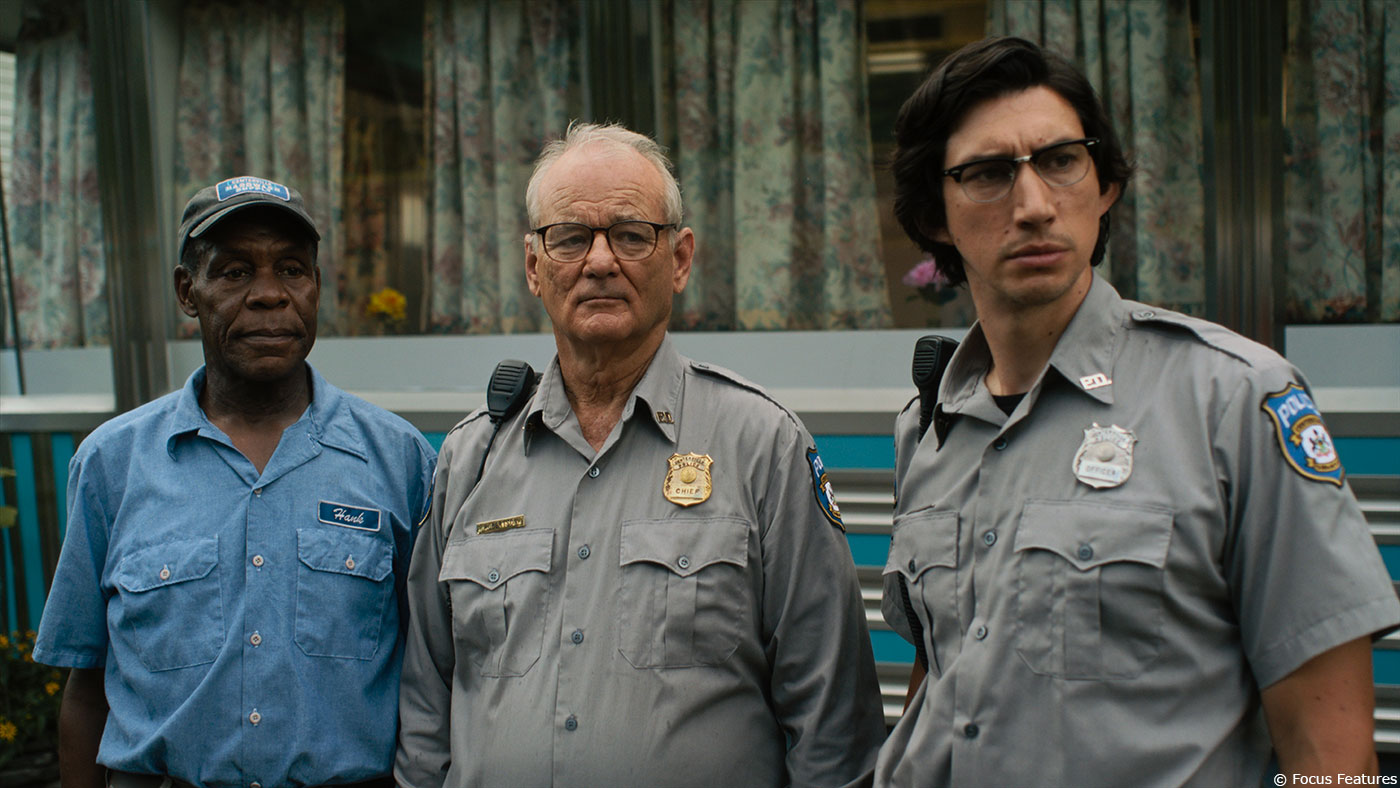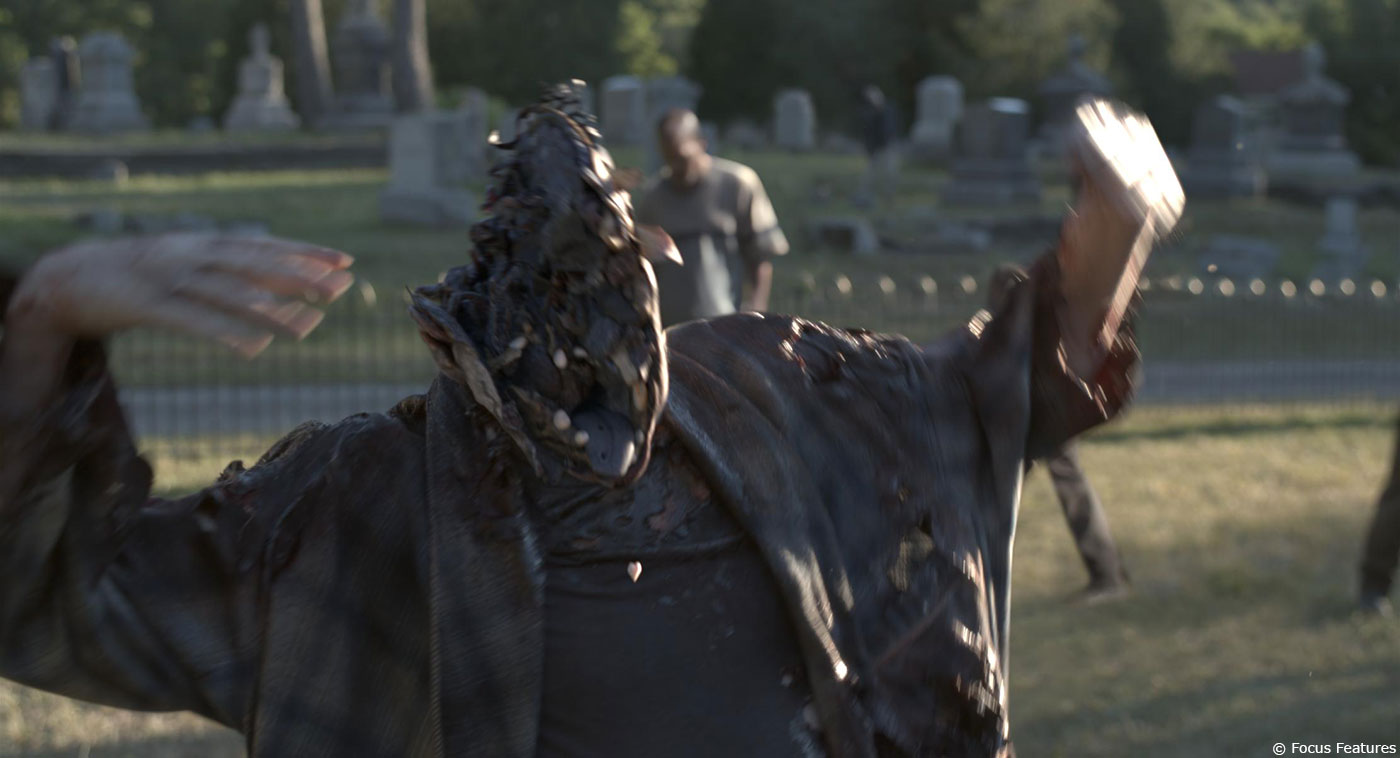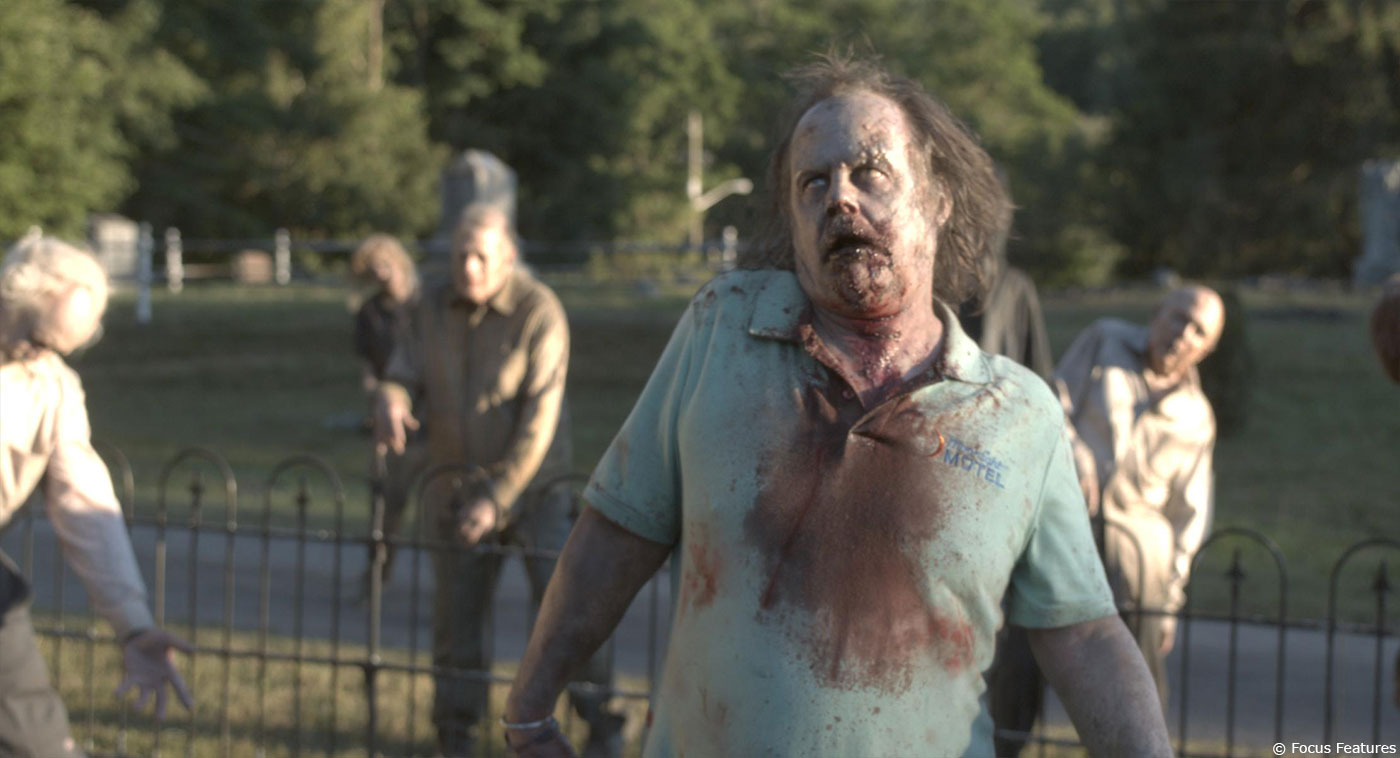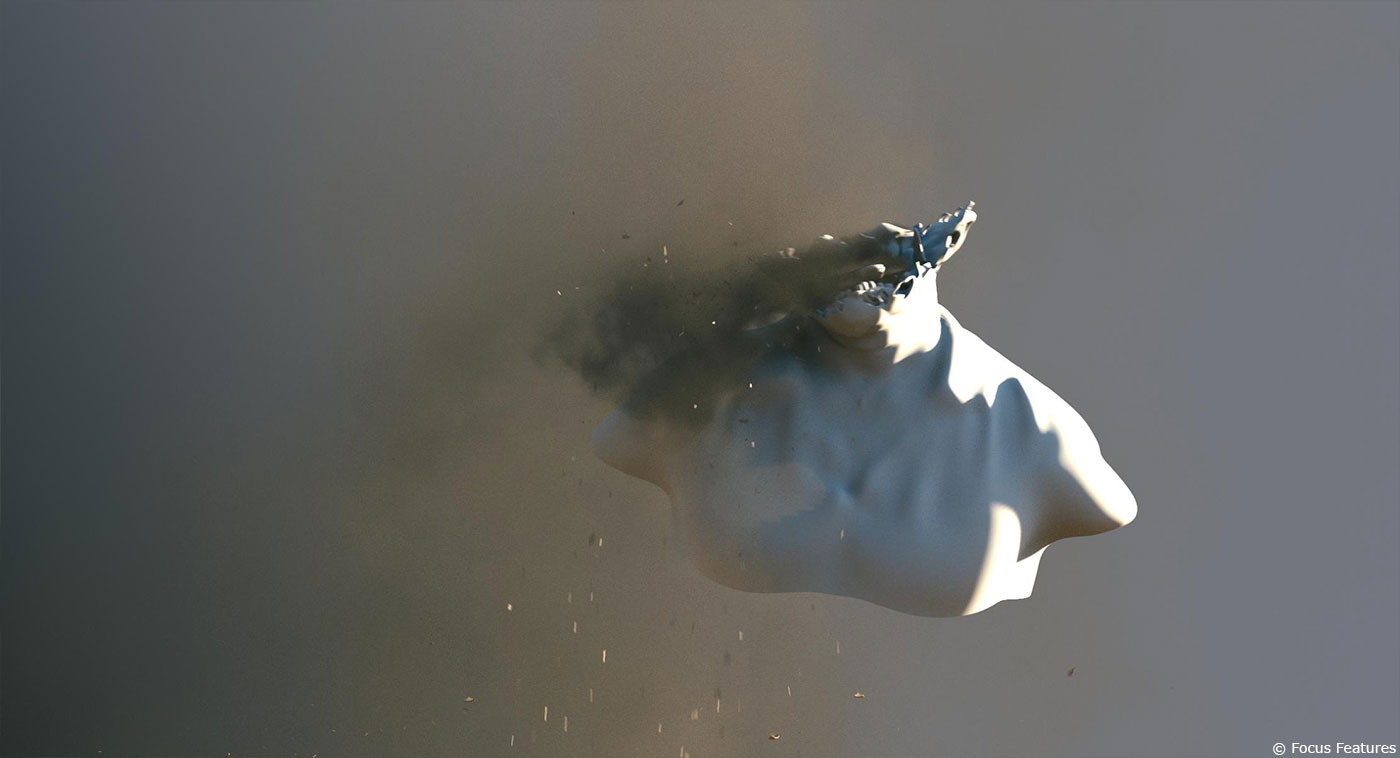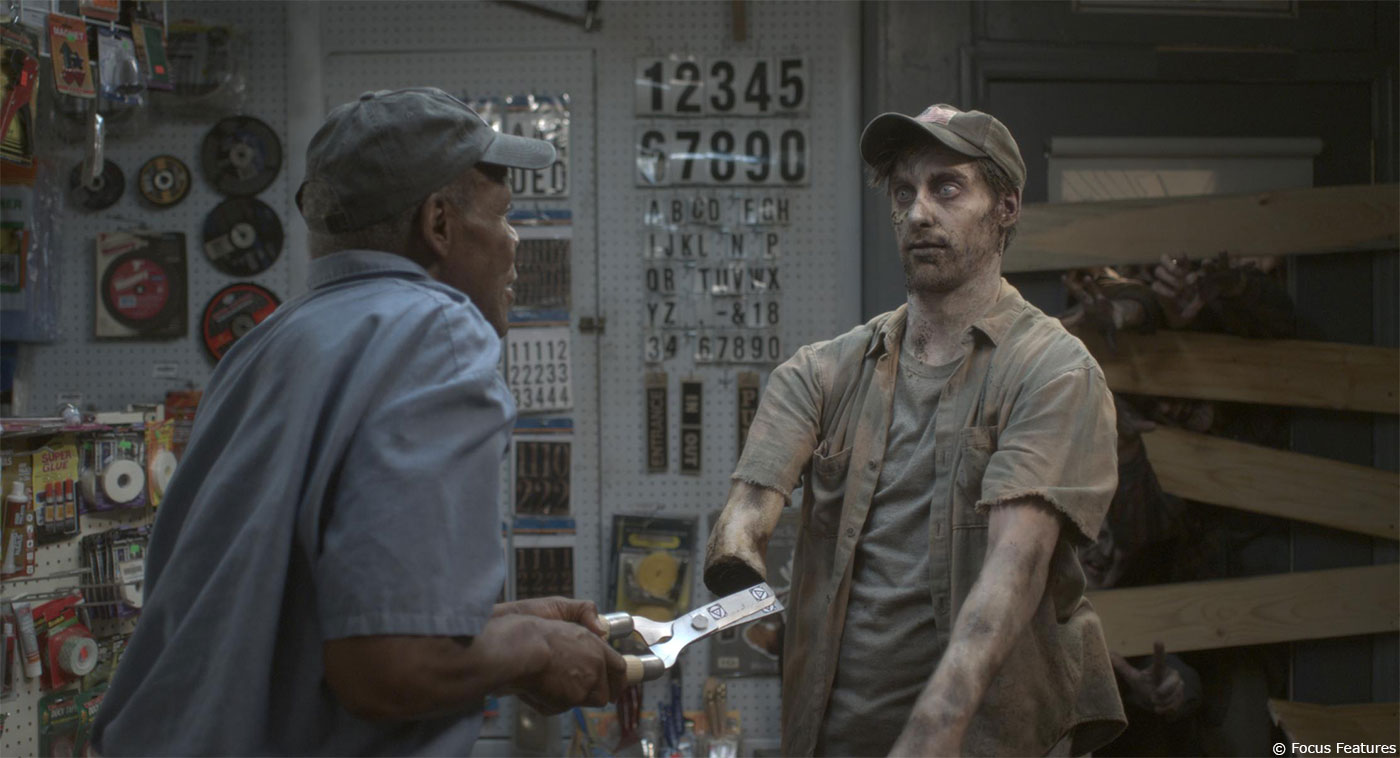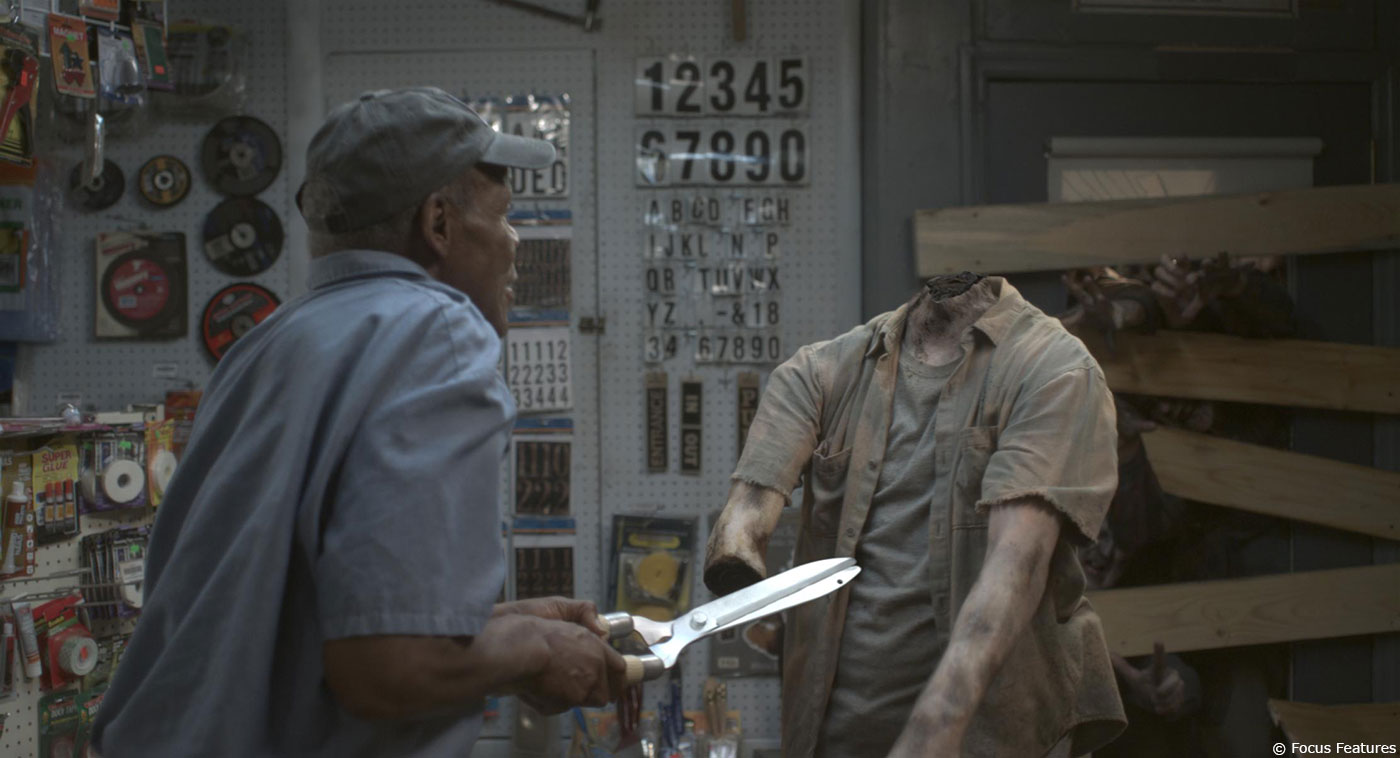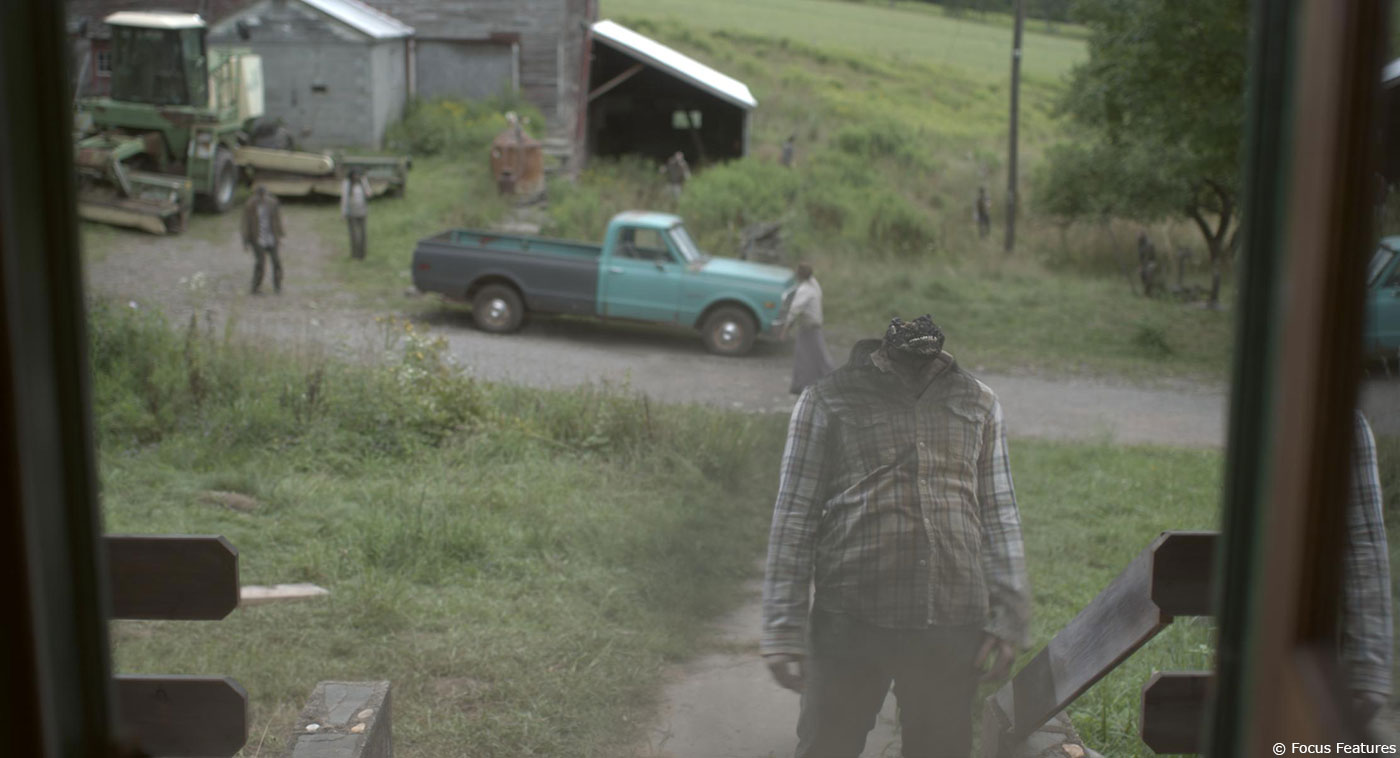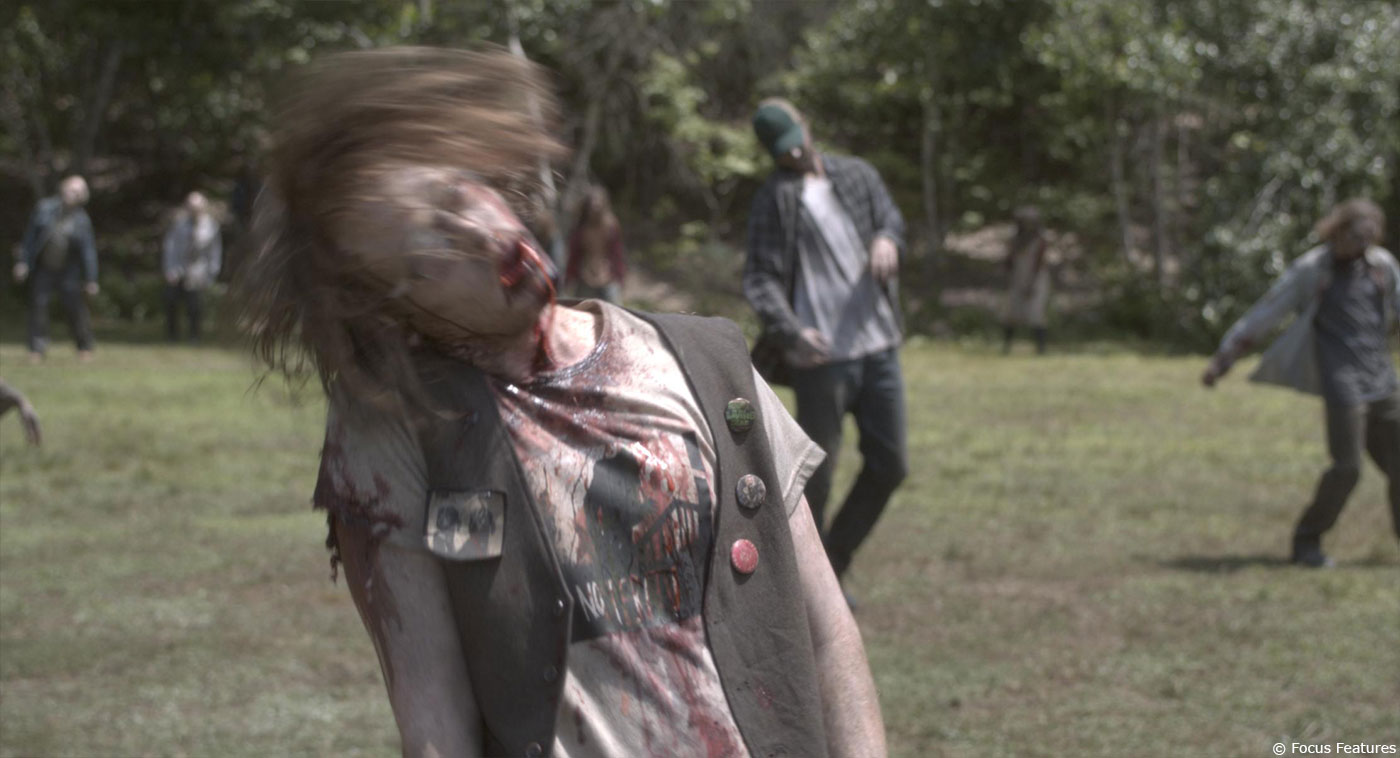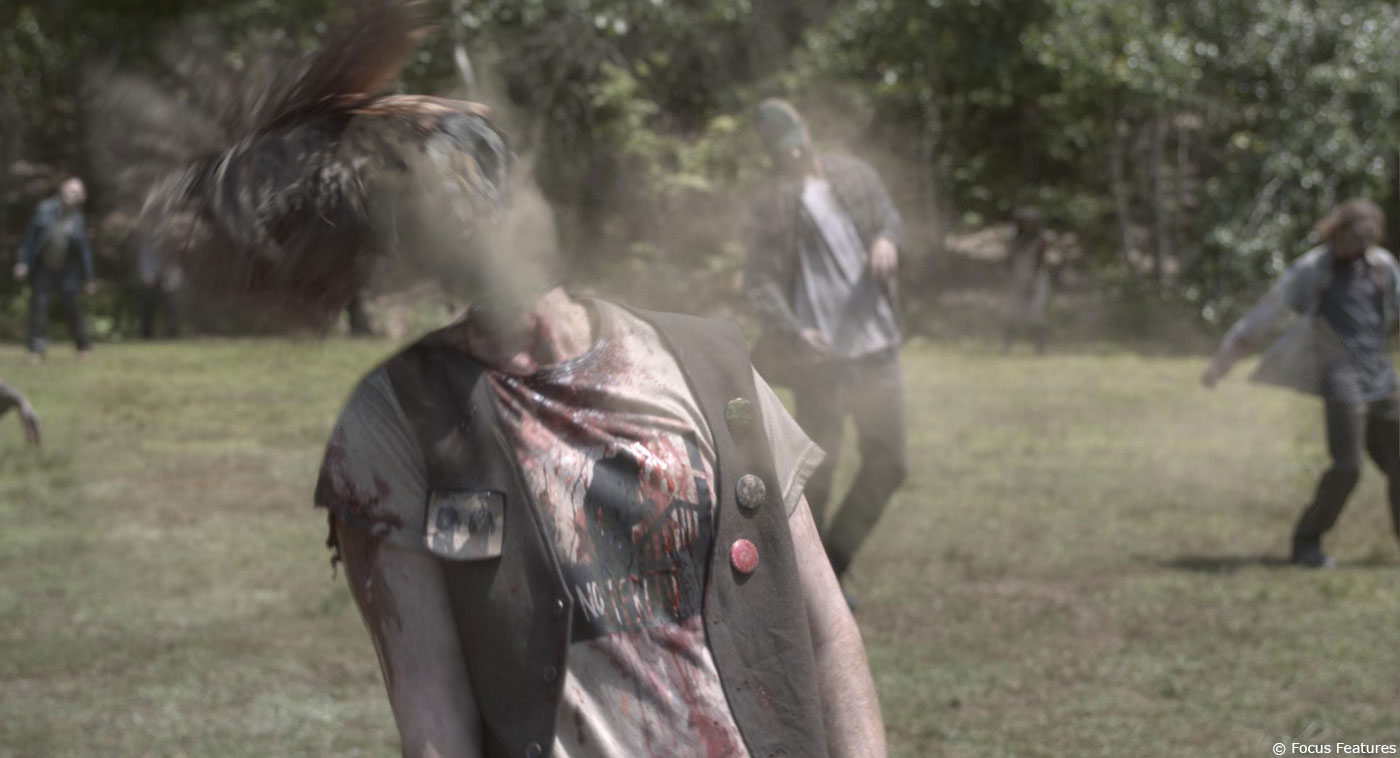Before blasting zombie heads for Jim Jarmush for THE DEAD DON’T DIE, Alex Hansson took care of the visual effects of movies such as CHAPPAQUIDDICK, BORG MCENROE and MONKY. He is the founder of the studio Haymaker.
Andreas Hylander has worked in visual effects for over twenty years. He has worked on many films like CENTURION, THE ZERO THEOREM, CHAPPAQUIDDICK and BORG MCENROE and he is the founder of Chimney Gothenburg.
What is your background?
I’m the founder and owner of Haymaker, a visual effects company based in Gothenburg, Sweden. (We will soon be opening our doors in L.A). I started out by directing and creating effects driven music videos for the Swedish heavy metal scene in the early 2000’s, this turned out to be the best schooling imaginable as I was able to experiment with anything that I could come up with. From there I moved on to doing work on commercials and finally I was able to land my company’s first feature film approx. 7 years ago.
How did you and Chimney get involved on this show?
Andreas // Haymaker were subcontracted through Chimney. At Chimney New York our co-producer Fredrik Zander helped Animal Kingdom (producer) with a post-plan set-up that would work for the VFX without hindering the need for back-and-forth design meetings. By utilizing Haymaker’s great experience with VFX and at the same time use the agile and multitalented VFX-team at Chimney New York we came up with a good work split. In Gothenburg we designed and executed the zombie-shots, and New York handled all the curious other VFX-shots which are aplenty in this movie (300+ shots. Since Jim and Affonso Gonçalves (editor) were editing the movie at Chimney’s New York’s facilities, he could any day stroll over to the VFX-team in New York if there were any questions.
What was your feeling to work with iconic director Jim Jarmush and especially on a zombie movie?
Jim Jarmush is such a gifted director, as well as being one of the nicest people I ever had the opportunity to meet. Being able to decapitate over 50 Zombies by the hands of a great cast… It was a dream come true!
How was the collaboration with director Jim Jarmush?
I could not have asked for a better collaboration, both on set and during the post work. Jim is the kind of Director who is very open minded and want you to go out of the box and propose new and interesting ideas instead of being locked in on what might have been the idea from the beginning.
What was his expectations and approach about the visual effects?
Jim had some basic ideas of what he was looking for, but other than that he relied on me to come up with ideas on how to shoot the plates as well as bringing him fresh ideas on the best ways to design the effects.
How did you organize the work?
Andreas // Since we had two teams working – one in Gothenburg and one in New York – we had to make sure we were always on schedule and that both teams met the deadlines. Financially it was a set-up involving the very proactive film fund “Film i Väst” who operates in the west part of Sweden and loves these types of projects. It also involved our set-up in New York with their respective needs. The rebids and cut-changes were handled very smooth and never really got in the way of doing great VFX, which was a welcomed surprise.
How did you split the work amongst you and between the Haymaker and Chimney offices?
Haymaker was in charge of the Zombie-beheadings, UFO and digital crowds. Chimney New York handled for instance all the bluescreen car-shots (there were a lot!), digital birds, all of the moon-shots, the POV binocular-shots and several speed-ramps. Also all the last-minute ideas that kept coming in, I think the last one was a certain “angel dust”-effect surrounding Selena Gomez head.
Can you explain in detail about the weird aspect of the Moon?
Andreas // This is a design that Sam O’Hare of Chimney New York came up with. The weird purple/blue mist and clouds, and the creepy way it spins (moons don’t normally spin all that much) were all ideas that Jim liked straight away. It got refined through-out the shot-production phase but the basic ideas remained intact. These shots were also important to link the zombies even more to the environmental focus of the film – that it’s man-made natural disasters that’s causing the zombies to appear.
The movie is quite gory. How did you enhance this aspect?
Most of the gore in the film were done with practical effects by Michael Marinos team. But a few sequences required VFX, such as the scene were Selena’s head is dangling from Adam Driver’s hand post-decapitation.
There is an interesting effect when the zombies gets hits on the heads. How did you design it?
Right after the first meeting I had with Jim in N.Y where he told me about his idea of the Zombies being filled with dust. Also described as “dry, rotted wood”. I went back home to Sweden and did RnD with my self as a zombie. I proposed some ideas on the design and he liked it right away. My team kept refining and enhancing the setup all the way up to shot-production.
Can you explain in detail about the various decapitations and zombies killing?
Since there are so many Zombies getting their heads removed, I wanted to come up with various ideas on how to decapitate them, to mix it up so it wouldn’t feel repetitive. Different approaches, like the heads not always getting cut or blown of at the neck line, but instead half the head being blown off with the jaw still flapping for instance. One zombie had his bottom jaw still mostly intact after a shotgun blast, which made for a very comical effect as he went down with the rest of the head missing.
How did you create the various digital doubles and their heads?
We scanned all the stunt-actors/actors on set, right after they where done with their specific scenes so that makeup facial expressions etc. would match as close as possible to minimise extra work in the post process. The scans where later refined and digital hair was added. The actors physical movement at the time of the beheadings where manually match-animated and the lighting was done using HDRI in combination with LIDAR from the set survey.
What was the main challenges with the zombies killing?
To design variations and mix it up enough so that it would not feel repetitive.
Can you tell us more about the environment work and especially when the town is on fire?
Andreas // There were no town on fire in this film 🙂 Most of the environments were filmed as-is. However, a lot of the material was shot during the day, to have a day-for-night look. But while editing it was discovered – and early grade-tests confirmed this – that many scenes would benefit from a new sky. Hence we ended up doing a lot of sky-replacements both in Gothenburg and New York. Fred Elmes (DOP) had very specific ideas which helped a lot.
Suddenly a flying saucer makes an entrance. How did you design and create it?
Jim wanted the flying saucer to be old school, like the old 1930’s scifi movies. We added a modern touch to it, by bringing in elements and textures such as volumetric lights and smoke.
Did you received specific references and indications for the flying saucer?
Yes, we got some stills from old sci-fi movies.
Can you tell us more about the shaders and textures work?
All the dust effects/volumetric lights and digital crowds where done in Houdini and rendered with Mantra. The digital doubles where animated and rendered in Maya using Vray. The entire compositing pipeline was based on deep, so both Mantra and Vray renders where rendered with a deep output. Regarding the textures of the doubles, sometimes we got away with using camera projection from the actual plate, other times we used the textures from the scans. It all depended on the specific shot.
How did you animate the flying saucer and Tilda Swinton?
Basic keyframe animation. This was in fact one of the sequences that required a bit back-and-forth, when we designed how Tilda would transcend into the flying saucer. Jim wanted it to be clear that she was not a human, but at the same time not be made in the same manner as the zombies. We came up with a sort of hologram-look based on full body scans we had of Tilda which Jim ended up liking a lot.
Which sequence or shot was the most challenging?
I have to say that it was the scene where Tilda’s character is chopping the heads of the ”golfers” at the funeral home. The reason being that it was planned and shot to have the heads falling backwards, but once in editing Jim thought it would be funnier if the heads would fall in front towards the camera instead. Since this was not planned and no practical effects was done to make this work we had do do a lot of trial and error before we nailed it.
Is there something specific that gives you some really short nights?
That’s every night when being in this business, isn’t it? 🙂
What is your favorite shot or sequence?
It’s the scene where Tilda Swinton’s character has just arrived at the cemetery and is getting attacked by two of the undead. That shot ended up exactly how we planned it. I remember sitting next to Jim watching on set while Tilda was swinging her katana. She nailed it on the first take. Jim and I looked at each other and said ”F*ck yeah, that’s it!” Followed by a high five. 🙂
What is your best memory on this show?
There are so many good memories, but I have to say it was to work with and getting to know the cinematic genius master Jim. A true honor.
How long have you worked on this show?
From getting the first phone call about the project until we delivered the last shot, I was on for 10 months (7 days/week no exceptions :))
What’s the VFX shots count?
85 in Gothenburg. Not a lot, but each shot was quite complicated. In New York around 300 shots, but much quicker ones.
A big thanks for your time.
WANT TO KNOW MORE?
Haymaker: Dedicated page about THE DEAD DON’T DIE on Haymaker website.
Chimney: Official website of Chimney.
© Vincent Frei – The Art of VFX – 2019


